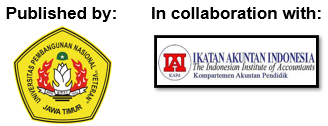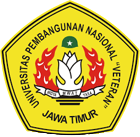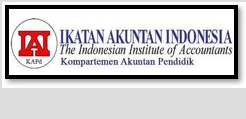The Analysis of Intention and Use of Financial Technology
(The Case of E-money)
DOI:
https://doi.org/10.33005/jasf.v3i1.70Keywords:
e-money, financial technology, UTAUT2Abstract
The rapid development of technologies affects the financial technology sector, especially e-money in Indonesia. This research aims to analyze the determinant from intention and use behavior of financial technology (e-money) using UTAUT2 as the model. This research took place in Jabodetabek, with a total sample of 300 people as the respondents. The purposive sampling method is used as the sampling method in this study. The scale which is used in this study is the Likert scale with a range of 1-5. Data were analyzed using descriptive and Structural Equation Modeling (SEM). The results show that performance expectations, effort expectancy, social influence, facilitation conditions, and habits are factors that influence the intention and use of e-money. On the other hand, hedonic motivation and price value do not affect behavioral intention. It indicates that using financial technology is a must and not depend on user motivation or the price of the technology. These results provide implications about several factors as the determinant of e-money for stakeholders to develop the strategy for e-money based on the most influential factor that affects consumers as users. While developing e-money technology, the developer should take into account factors such as performance expectations, effort expectancy, social influence, facilitation conditions, and habits.
Downloads
References
Chang, C. M., Liu, L. W., Huang, H. C., & Hsieh, H. H. (2019). Factors influencing Online Hotel Booking: Extending UTAUT2 with age, gender, and experience as moderators. Information (Switzerland), 10(9). https://doi.org/10.3390/info10090281
Dzulhaida, R., & Giri, R. R. W. (2017). Analisis Minat Masyarakat Terhadap Penggunaan Layanan E-Money Di Indonesia Dengan Menggunakan Model Modifikasi Unified Theory of Acceptance and Use Technology 2 (Utaut 2). Majalah Ilmiah UNIKOM, 15(2), 155–166. https://doi.org/10.34010/miu.v15i2.555
Edward, J. R. (2017). Undergraduate Student Acceptance and Use of Mobile Learning in Speech Preparation Using Skype. Indiana State University.
Eneizan, B., Mohammed, A. G., Alnoor, A., Alabboodi, A. S., & Enaizan, O. (2019). Customer acceptance of mobile marketing in Jordan: An extended UTAUT2 model with trust and risk factors, International Journal of Engineering Business Management, Vol. 11, December 2019, 1-10. https://doi.org/10.1177/1847979019889484
Gharaibeh, M.K., Arshad, M. R., & Gharaibeh, N. K. (2018). Using the UTAUT2 Model to Determine Factors Affecting Adoption of Mobile Banking Services: A Qualitative Approach, International Journal of Interactive Mobile Technologies (iJIM), 12 (4), 123-134. Https://doi.org/10.3991/ijim.v12i4.8525
Ghozali, I. (2011). Aplikasi Analisis Multivariate Dengan Program IBM SPSS 19 (edisi kelima). Semarang: Universitas Diponegoro.
Ghozali, I. (2017). Model Persamaan Struktural Konsep dan Aplikasi Dengan Program AMOS 24 Update Bayesian SEM Edisi 7. Semarang: Badan Penerbit Universitas Diponegoro.
Hair, J. F., Black, W. C., Babin, B. J., & Anderson, R. E. (2010). Multivariate Data Analysis. Hair (7th, 2010).pdf. Pearson.
Haywood, D. (2017). The Relationship between Nonprofit Organizations and Cloud Adoption Concerns. Walden University.
Jauhari, H., Sari, Y., & Dewata, E. (2019). Implementation of Good Governance, Utilization of Information Technology and Reliability of Government Financial Statement. Journal of Accounting and Strategic Finance, 2(2), 117–126. https://doi.org/10.33005/jasf.v2i2.59
Kholid, M. N., Alvian, S., & Tumewang, Y. K. (2020). Determinants of Mobile Accounting App Adoption By Micro, Small, and Medium Enterprise in Indonesia. Journal of Accounting and Strategic Finance, 3(1), 52–70.
Khurana, S., & Jain, D. (2019). Applying and Extending UTAUT2 Model of Adoption of New Technology in The Context of M-shopping Fashion Apps. International Journal of Innovative Technology and Exploring Engineering, 8(9 Special Issue), 752–759. https://doi.org/10.35940/ijitee.I1122.0789S19
Kristoforus, B. (2013). Penerapan Model UTAUT Untuk Memahami Perilaku Pengguna Sistem Informas Akademik. Jurnal JTI, 2(1), 1–10.
Kusuma, D. H., & Puspaningsih, A. (2016). Model Penerimaan User Dalam Implementasi SAP (Systems Application and Product) dengan Menggunakan Model UTAUT. Jurnal Aplikasi Bisnis, 15(9), 1799–1822. https://doi.org/10.20885/jabis.vol15.iss9.art3
Lail, F. (2019). The Analysis of Individual's Behavioral Intention and Use Behavior in Using OVO Based on UTAUT 2. Jurnal Ilmiah Mahasiswa FEB Universitas Brawijaya, 7(2).
Mehi, M., Hone, K., & Tarhini, A. (2019). A cross-cultural study of the intention to use mobile banking between Lebanese and British consumers: Extending UTAUT2 with security, privacy and trust, Technology in Society, 59, November 2019, 101151. https://doi.org/10.1016/j.techsoc.2019.101151
Onaolapo, S., & Oyewole, O. (2018). Performance Expectancy, Effort Expectancy, and Facilitating Conditions as Factors Influencing Smart Phones Use for Mobile Learning by Postgraduate Students of the University of Ibadan, Nigeria. Interdisciplinary Journal of E-Skills and Lifelong Learning, 14, 95–115. https://doi.org/10.28945/4085
Ouattara, A. (2017). Antecedents of Employees Behavioral Intentions Regarding Information Technology Consumerization. Walden University.
Owusu, K. K., Osei Atiemo, K.A. and Appiah, C. (2019), Acceptance and use of mobile banking: an application of UTAUT2, Journal of Enterprise Information Management, Vol. 32 No. 1, 118-151. https://doi.org/10.1108/JEIM-03-2018-0055
Palau-Saumell, R., Forgas-Coll, S., Sánchez-García, J., & Robres, E. (2019). User Acceptance of Mobile Apps for Restaurants: An Expanded and Extended UTAUT-2. Sustainability, 11(4), 1–24. https://doi.org/10.3390/su11041210
Pertiwi, N., & Ariyanto, D. (2017). Penerapan Model UTAUT2 Untuk Menjelaskan Minat dan Perilaku Penggunaan Mobile Banking di Kota Denpasar. Jurnal Akuntansi Udayana, 18(2), 1369–1397.
Pranoto, & Salsabila, S. S. (2018). Eksistensi Kartu Kredit Dengan Adanya E-money (E-Money) Sebagai Alat Pembayaran Pembayaran Yang Sah. Privat Law, 6(1), 24–33.
Rizal, M., Maulina, E., & Kostini, N. (2018). Fintech as One of The FInancing Solutions for SMEs. AdBispreneur: Jurnal Pemikiran Dan Penelitian Administrasi Bisnis Dan Kewirausahaan, 3(2), 89–100.
Sekaran, U. (2003). Research Method for Business, 4th edition. New York: John Wiley and Sons, Inc.
Suryaningrum, D. H. (2012). Assessing Individual Performance on Information Technology Adoption: A New Competing Model. Global Journal of Business Research, 6 (4), 111-125.
Susanto, I., & Handayani, R. (2018). No TitleFaktor-Faktor yang Mempengaruhi Penerimaan dan Penggunaan Sistem Informasi Pengelolaan Keuangan Daerah (SIPKD) dalam Perspektif the Unified Theory of Acceptance and Use of Technology 2 (UTAUT 2) di Kabupaten Semarang. Jurnal Akuntansi Dan Auditing, 15(1), 37–68.
Tazkiyyaturrohmah, R. (2018). Eksistensi Uang Elektronik Sebagai Alat Transaksi Keuangan Modern. Muslim Heritage, 3(1), 23. https://doi.org/10.21154/muslimheritage.v3i1.1240
Venkatesh, V., Thong, J. Y. L., & Xu, X. (2012). Consumer Acceptance and Use of Information Technology: Extending the Unified Theory of Acceptance and Use of Technology. MIS Quarterly, 36(1), 157–178. Retrieved from https://pdfs.semanticscholar.org/6256/0e2001480fd1f22558ce4d34ac93776af3e6.pdf%0Ahttps://pdfs.semanticscholar.org/6256/0e2001480fd1f22558ce4d34ac93776af3e6.pdf?_ga=2.124539978.1994179764.1540339706-2125081534.1540339706
Yu, C. S. (2012). Factors Affecting Individuals to Adopt Mobile Banking: Empirical Evidence from The UTAUT Model. J. Electron. Commer, Res, 13(104), 121.














